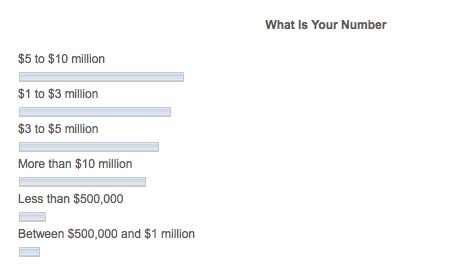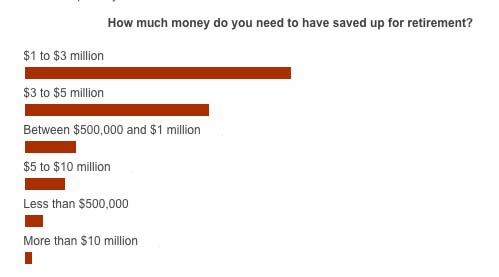 Philip Brewer has written a couple of articles for Wise Bread exploring the question: “Can You Buy Your Way Out of the Rat Race?”.
Philip Brewer has written a couple of articles for Wise Bread exploring the question: “Can You Buy Your Way Out of the Rat Race?”.
He says:
If you’re tracking your spending, you know how much money it takes to live on. If you’re tracking your investments, you know about how much return you’re getting from your capital. With those two numbers, you can get a pretty good estimate of how much money it takes to buy your way out of the rat race.
In its simplest form, the cost to buy your way out is just your annual spending divided by the return on your investments. I used to do that calculation a lot. When I got my first job interest rates were in double digits, so I could imagine getting $30,000 or even $40,000 a year — plenty of money to live on — from an investment as small as $300,000.
This is good advice if you want to retire on “$30,000 or even $40,000 a year” … I don’t 😉
The problem with these types of retirement articles is that they usually start from the assumption that your current salary +/- 30% is what you want to live off.
When my salary was $250k, this probably also held true for me … but, just a year or two earlier (when I was actually planning my own retirement) my salary was only $50k – plus my wife’s $60k, making our total household income less than half my ‘required retirement salary’.
So, I describe the retirement calculation process much as Philip describes it, with an extra step:
1. Decide what you want to do with your Life
2. Decide how much annual income you require (probably, without needing to work … but, that’s up to you)
3. Convert that amount to the capital that you need.
Now, Philip would say that you should subtract any income and/or pensions that you expect to receive along the way …
… I recommend that you don’t.
You see, you may not want to – or be able to – continue work through your ‘retirement’ – and, government pensions can always be taken away.
Rather, I recommend that you assume neither of these while you are ‘retired’, and reinvest any such ‘windfall income until you have enough accumulated to effectively increase your Number, hence your standard of living.
Huh?!
Well, Philip suggests:
Among people who invest for large institutions, there’s a rule of thumb that you can spend 5% of your endowment each year, and then expect to have a bit more to spend next year than you spent this year.
Of course, they can’t expect that 5% to be more every single year. Some years the investment portfolio does poorly–and after one of those years, the 5% that’s available for spending will be less than the previous year. Maybe much less.
For households, therefore, the rule of thumb is 4%.
We have a similar rule: The Rule of 20, which seems effectively the same as Phil’s 5% Rule [AJC: we’ll explain why it’s actually a VERY different concept, in a series of MM301 posts, coming up soon] … this is probably enough because you will probably:
– Earn some additional money in retirement (remember those part-time income and pensions that we mentioned?)
– Spend a little less as you get older (unless you feel that health care will outweigh all of those Learjet trips?)
– Overshoot your Number, if you wait until reaching your Number (on paper) before actually trying to sell your business / real-estate, etc.
BUT, don’t let me stop you from building in an additional buffer by modifying my ‘rule’ to anywhere between the Rule of 20 to the Rule of 40.
Hint: I wouldn’t bother … the Rule of 20 is plenty to aim for; but, don’t let me stop you from aiming for more …
…. just don’t try and make it LESS 🙂





 Last week
Last week